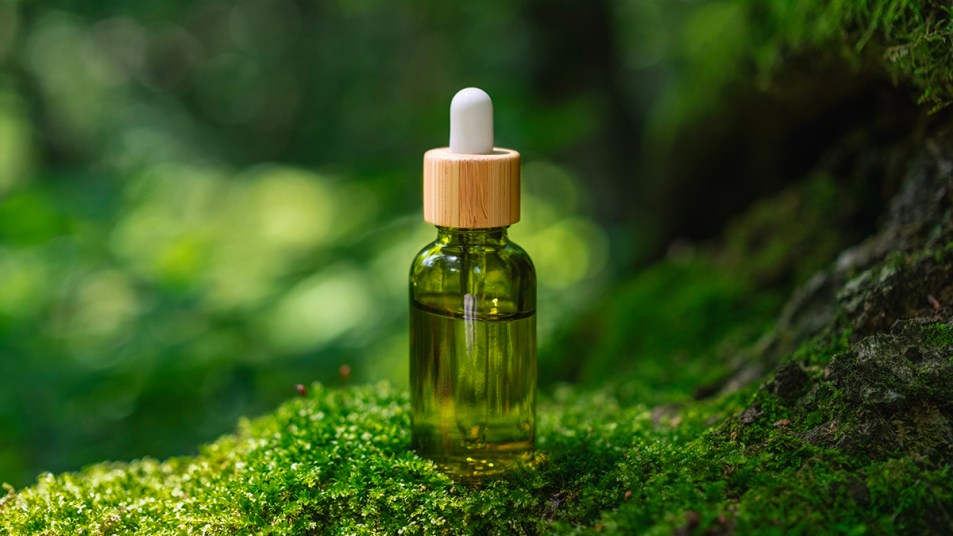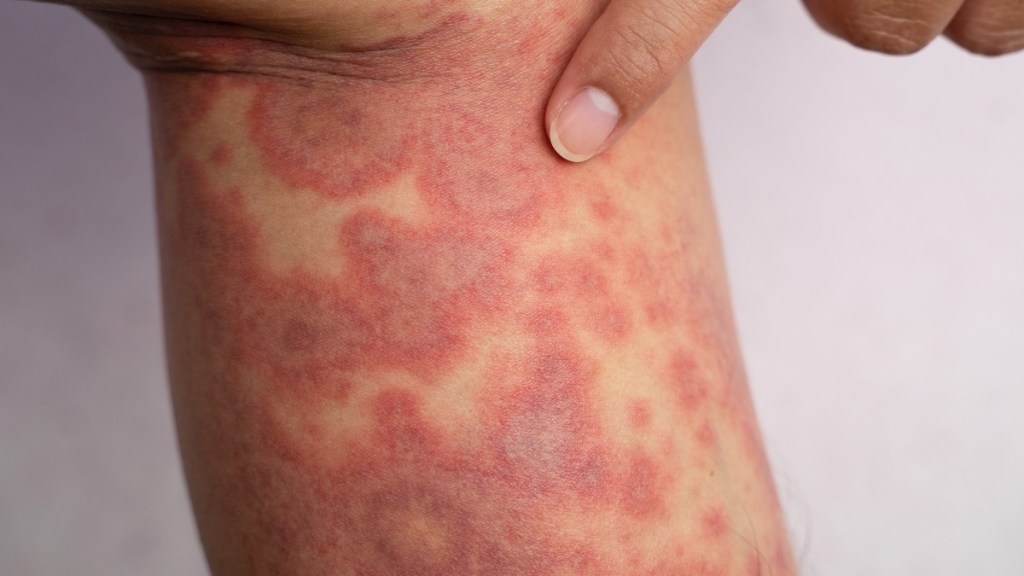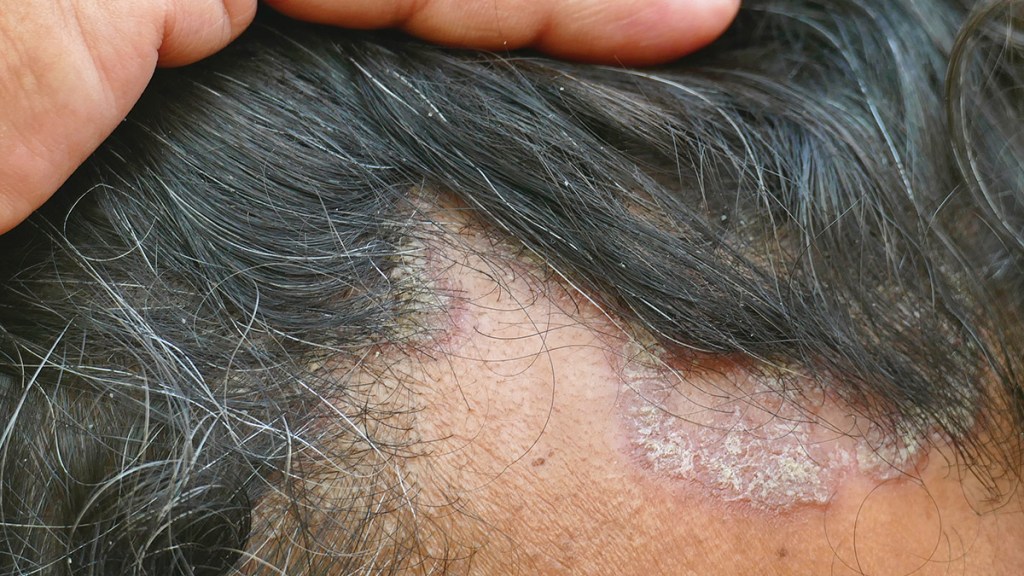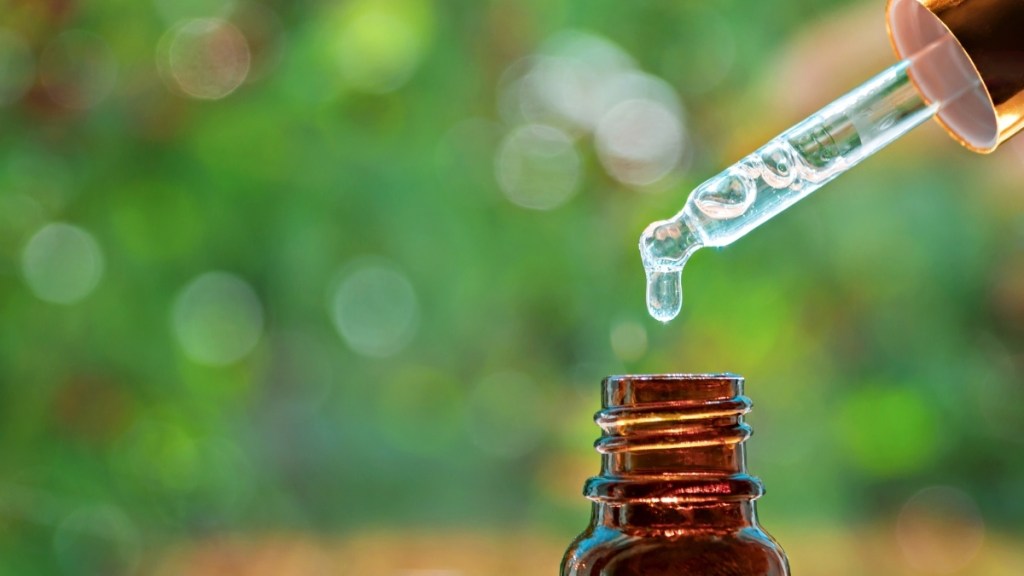Dermatologists Reveal How Tea Tree Oil May Work Better to Heal Red, Itchy Skin on Face and Scalp Than Prescription Drugs
Just ask Rosalee Rester, 57, who turned to tea tree oil as a last resort — and it worked!

We’ve all had the occasional rashes and itchiness associated with dry skin. But what if those rashes won’t go away? Or turn into more noticeable patches that bring embarrassment along with the pain and itch? It’s likely a skin condition known as eczema, and possibly one of the most common forms of eczema known as seborrheic dermatitis. For many of us, eczema flares are not only disruptive and uncomfortable, they can make us feel self-conscious about putting our hair up or ruin plans to wear that pretty party dress that bares our neck or arms. Fortunately, tea tree oil for eczema can soothe the irritating itch and calm the unsightly rash. Read on to discover the 7 types of eczema and how to use tea tree oil to treat them.
What is eczema?
Although eczema is most common in children, it can develop at any point in life, from adolescence through adulthood, says dermatologist Connie Yang, MD of PFRANKMD by Dr. Paul Jarrod Frank. “It’s an inflammatory skin condition that causes itchy, dry and sensitive skin,” she says. “It can present as scaly rashes, itching or sensitivity to various allergens.”
Common triggers for eczema include environmental irritants such as pollen, dust, mold and pet dander, as well as chemicals found in fragrances, soaps, detergents, household cleaners, cosmetics and other personal care products. In addition, Dr. Yang says prolonged exposure to dry air or heat, emotional stress, hormone fluctuations and genetics can also cause the condition.
Related: This DIY Scrub Naturally Cured One Woman’s Eczema

The 7 types of eczema
There are 7 different types of eczema, though some are markedly more common than others. Here’s how to distinguish between each type:
1. Atopic dermatitis
This itchy, scaly rash can appear throughout the body and is caused by a combination of genetics and environmental factors, says Dr. Yang. “People with this type of eczema have impaired skin barrier function and increased trans-epidermal water loss,” she says. That means that not only can bacteria and allergens easily pass through the skin, but the skin allows a high rate of water to evaporate out of the body, causing dryness. In addition, people with atopic dermatitis tend to have overactive immune systems. All three of these factors raise the risk for inflammation and rash.
2. Contact dermatitis
This type of eczema generally appears on an area of skin that came into contact with an irritant or allergen, says Dr. Yang. “Contact dermatitis is caused by an external chemical or substance that triggers an immune response that leads to a localized itchy rash.” (Click through to learn how raw honey can soothe irritated skin.)
3. Neurodermatitis
Rashy skin and intense itching confined to just one or two areas are hallmarks of neurodermatatis. It most often flares up on the feet, hands, shoulders and scalp, and causes an irresistible urge to scratch.
4. Dyshidrotic eczema
When painful, itchy rashes appear as deep-seated blisters, most commonly on the hands and feet, it’s likely dyshidrotic eczema, Dr. Yang says. “It’s caused by a combination of an overactive immune system and exposure to allergens and irritants.”
5. Nummular eczema
Circular, itchy and oozing patches are skin are what’s known as nummular eczema. This type of eczema is more common in women and can be triggered by extremely dry skin, a scrape or insect bite.
6. Statis dermatitis
This form of eczema occurs when there’s poor blood flow to the lower legs, which causes fluid to pool there. Statis dermatitis manifests as ankle swelling, speckles of discoloration in the skin on the legs and feet, itchy, scaling and dryness. Check out the video below for more on the 7 types of eczema (including photo examples).
7. Seborrheic dermatitis
One of the most common forms of eczema, seborrheic dermatitis (SD) is characterized by patches of red, itchy, flaky skin commonly found in and around the eyebrows, nose, behind the ears and on the scalp, Dr. Yang says. Patches can appear more thickened than other types of eczema and form where skin tends to be more oily. Dandruff is often considered the mildest form of seborrheic dermatitis. (Click through for the best shampoo for hair loss caused by SD and to find out how black seed oil can soothe seborrheic dermatitis on the scalp.)

At the root of seborrheic dermatitis is a yeast called Malassezia. This yeast is a normal inhabitant of our skin, but when it grows out of control, it causes SD. “Genetics are a contributing factor, as the immune system plays a role in the inflammation, itching and scaling in this condition,” Dr. Yang says. Men are slightly more at risk, she says, since male hormones stimulate the production of more oil on the skin and scalp. “Malassezia tends to feed off of these oils.”
But female hormones can also play a role in eczema and seborrheic dermatitis, says integrative gynecologist Felice Gersh, MD. Fluctuating hormones during puberty, the menstrual cycle, pregnancy and menopause can cause skin and microbiome changes that allow this yeast to grow. Plus, SD can be worsened by stress, cold weather and certain medical conditions such as Parkinson’s and HIV, Dr. Yang adds. Interestingly, she says the condition also affects 42% of infants in the form of “cradle cap.”
“Stress can contribute to alterations in the skin microbiome, which can lead to overgrowth of Malassezia,” Dr. Yang explains, adding that hot and humid weather can also promote Malassezia growth.
Related: Why Does My Scalp Smell? Dermatologists Reveal What Women Over 50 Need to Know
How to use tea tree oil for eczema
Both prescription and over the counter creams, lotions and shampoos that contain ingredients with antifungal properties are generally used to treat the condition, Dr. Yang says. She advises looking for products that contain selenium sulfide, ketoconazole, zinc pyrithione or tea tree oil.
In fact, tea tree oil can often be used on its own, diluted in shampoos and creams for topical use to treat eczema, including seborrheic dermatitis. “Tea tree oil can decrease inflammation that drives the itching in SD,” says Dr. Yang. “It also helps decrease the growth of Malassezia yeast, which secrete enzymes that trigger the inflammation.”
Credit for these effects goes to the oil’s terpene hydrocarbons, monoterpenes and sesquiterpenes, compounds that provide antibacterial, antiviral and antifungal activity, says Josh Axe, DNM. “It’s a powerful disinfectant and is gentle enough to apply topically to fight skin infections and irritations,” he says, helping to reduce eczema inflammation and itch. (Click through to learn why tea tree oil is a top essential oil for easing congestion, and how probiotics can benefit skin health, too.)

How to dilute tea tree oil
If using tea tree oil on the scalp, Dr. Yang advises mixing a few drops into a dollop of shampoo to dilute it. “Always perform a patch test prior to applying to the entire scalp to ensure you do not have any adverse reactions to the oil,” she adds. That means simply applying the mixture to a small area of skin and checking for any signs of an allergic reaction (such as redness or irritation) that might flare up in the following 24 hours.
For application on the face or other areas of skin, Dr. Axe suggests diluting the oil with a carrier oil. You can mix tea tree oil with jojoba oil in a 1:1 ratio. Then do a similar spot test before going wide with the application, since some people are sensitive to tea tree oil. He also advises keeping it away from the eyes, contact lenses and the inner nose.
Related: Taking a Bath With This Unexpected Ingredient Can Help Relieve Eczema
What to look for when purchasing tea tree oil for eczema
When purchasing tea tree oil for eczema, Dr. Yang advises looking for a brand that’s 100% pure tea tree oil without additives or fillers. You’ll want to opt for one that’s been tested for purity and quality by a third-party organization, too. She also advises buying oil that comes in a dark glass bottle, since light exposure can cause the oil to deteriorate. One that fits the bill: Rocky Mountain Oils Tea Tree Essential Oil (Buy from RockyMountainOils.com, $12.95).
Tea tree oil for eczema success story: Rosalee Rester, 57

“This itching is driving me out of my mind!” Rosalee Rester, 57, muttered as she battled the urge to scratch her ear. For years, Rosalee had been living with a common skin condition called seborrheic dermatitis. The form of eczema causes scaly patches, redness and flaking skin in oily areas of the body, such as the sides of the nose, eyelids, scalp and, in Rosalee’s case, the folds of her ears.
Although anyone can develop the condition at any time, Rosalee’s issues started as a result of the hormonal changes when she entered late perimenopause. Unlike with seasonal allergies, she got no reprieve. She suffered year-round. Her itching grew so intense, she couldn’t focus on anything else. She often developed painful sores from scratching that would ooze and put her at risk of infection.
I have to wear my hair long to hide the raw, ugly patches, but I still worry someone will notice, she thought with a cringe.
Traditional eczema treatments failed to help Rosalee
Rosalee tried over-the-counter hydrocortisone creams, and her doctor prescribed a topical steroid. They helped clear up her symptoms during a flare up. But they didn’t prevent them from returning as soon as she discontinued use.
This is just a never-ending vicious cycle, Rosalee realized.
Then one especially itchy day, she spotted a bottle of tea tree essential oil on a kitchen shelf. Traditionally, Rosalee had used it for cleaning because of its antimicrobial properties. But she suddenly remembered having read that it also had anti-inflammatory and anti-fungal properties. That enables it to kill yeasts associated with seborrheic dermatitis, as well as fungus like athlete’s foot and other skin issues.
Maybe this is my answer! Rosalee thought.
How tea tree oil finally healed Rosalee’s eczema
Because Rosalee had been exposed to tea tree oil when she cleaned, she knew the oil didn’t irritate her skin. So she add a few drops to jojoba oil and rubbed it onto each ear. To Rosalee’s amazement, within a few hours of applying the oil to her ears, the persistent itching stopped! Encouraged, Rosalee continued massaging a couple of drops onto her ears twice a day. And in about a week, she noticed the redness and scaliness was gone.
Delighted, Rosalee has been using tea tree oil ever since. “I am so happy with the tea tree oil because it’s inexpensive and I can use it safely every day. It has a pleasant aroma, so I don’t worry about someone noticing the smell,” Rosalee beams. “In fact, I no longer worry about being embarrassed at all. My skin looks and feels great!”
For more healing essential oils:
The 6 Best Essential Oils For Congestion: Expert Advice on How & When to Use Each
Study: Breathing in Rose Essential Oil Eases Pain & Ushers in Calm in 90 Seconds
Orange Essential Oil Lowers Cortisol Levels By 84% and Counters Both Stress & Carb Cravings
This content is not a substitute for professional medical advice or diagnosis. Always consult your physician before pursuing any treatment plan.













